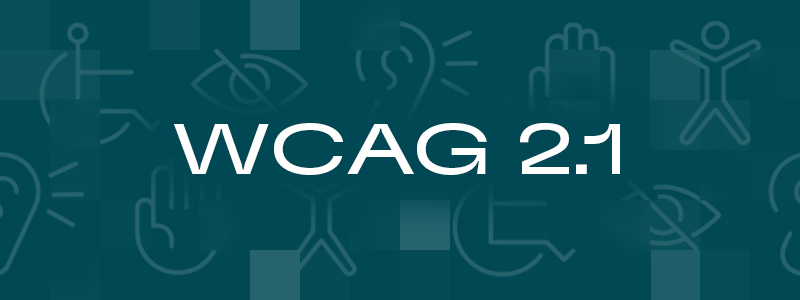
The Americans with Disabilities Act (ADA) is a civil rights law prohibiting discrimination against people with disabilities. It ensures equal opportunity in employment, goods and services, and government programs. A person with a disability is defined as someone with a physical or mental condition limiting major life activities, a history of such a condition, or being perceived as having one. The ADA applies to various entities, including employers, governments, and businesses. and is divided into five titles covering different areas. In April 2024, the U.S. Department of Justice published its final regulation on web and mobile application accessibility under Title II of the ADA in the Federal Register. The regulation goes into effect for large public entities on April 26, 2026, and for small public entities on April 26, 2027. Sam Houston State University falls within the large campus category and thus must comply by the deadline of April 26, 2026.
Overview of the New Title II Regulations
Title II of the ADA requires state and local governments to make sure that their services, programs, and activities are accessible to people with disabilities (U.S. Department of Justice Civil Rights Division, 2025). The regulations apply to all digital services offered by public entities, including websites, mobile apps, online learning platforms, registration systems, and financial aid information. The goal is to remove barriers that prevent individuals with disabilities from accessing essential services and participating in civic activities. Adjustments to state and local government digital platforms will be needed to comply with these regulations. The regulations adopt the Web Content Accessibility Guidelines (WCAG) 2.1 Level AA as the standard, which means that all web content, mobile apps, and documents must meet these accessibility criteria.
Impact on Higher Education Institutions
As a special report from The Chronicle of Higher Education posited, “To meet the needs of this growing and diverse population, colleges will need to make digital accessibility part of their strategic planning and prepare for future disruptions to learning – be it a pandemic, natural disaster, or another crisis” (Field, 2023, p.46). The new ADA Title II regulations, effective from April 2024, significantly impact higher education by mandating that all web content and mobile applications provided by public colleges and universities meet specific accessibility standards (WCAG 2.1 AA). This includes ensuring compatibility with screen readers, providing alternative text for images, and making interactive elements accessible. These regulations apply to all digital services, such as online course materials, library resources, and administrative services. Institutions have 2-3 years to comply, depending on their size, necessitating prompt action to audit and update digital content and platforms. This initiative aims to ensure there are no barriers for students to access educational resources and opportunities.
Specific Guidelines for Captioning and Audio Descriptions
The new ADA Title II regulations provide specific guidelines for captioning and audio descriptions to ensure accessibility in higher education. According to Lewis (2024), the following are the key requirements:
- Captions for Pre-recorded Video (WCAG 2.1 Level AA 1.2.2): All pre-recorded video content must include captions to make it accessible to deaf and hard-of-hearing viewers.
- Text Alternatives for Audio-only Content (WCAG 2.1 Level AA 1.2.3): Audio-only content must have a text alternative, such as a transcript.
- Captions for Live Audio Content (WCAG 2.1 Level AA 1.2.4): Live audio content in synchronized media must be captioned.
- Audio Descriptions for Pre-recorded Video (WCAG 2.1 Level AA 1.2.5): Pre-recorded video content must include audio descriptions to make it accessible to blind and visually impaired viewers.
These guidelines ensure that all digital content, including online courses, webinars, and other educational materials, is accessible to students with disabilities.
How SHSU Online Supports Accessibility
To support the university's mission to offer an accessible, quality higher education, SHSU Online remains committed to addressing accessibility challenges in digital course delivery that affect all students, particularly students with disabilities. For students who initiate or have an existing declared disability with the Services for Students with Disabilities office, a comprehensive process to provide transcription and/or captioning services prior to the start of each semester begins. By leveraging third-party vendors as needed, the process involves instructors, members of the Online Media Innovation team, and members of the Course Development team to support increased access to digital course content. In addition, instructors and students have access to Ally within Blackboard (Bb), providing instructors with options for improving identified accessibility issues and providing students with alternative formats to consume content. For more information about captioning and transcription services, visit the Media Innovation Services guide. For more information about Ally, see Faculty – Contributing to Ally and Digital Accessibility.
Conclusion
The new ADA Title II web accessibility rule marks a historic moment in American history and a significant step towards ensuring digital accessibility in higher education. By mandating compliance with WCAG 2.1 Level AA standards, these regulations aim to remove barriers and provide equal access to educational resources for students with disabilities, holding the potential to benefit all students and leading to improved academic outcomes. By fostering a supportive environment, all students, including those with disabilities, are more likely to complete their education, contributing to higher graduation rates and better career prospects. Ultimately, these efforts contribute to a more accessible educational landscape for all students, and SHSU Online invites you to join our commitment to addressing accessibility challenges in digital course delivery that affect all students.
References
Field, K. (2023, June). The Accessible Campus. The Chronicle of Higher Education. https://store.chronicle.com/collections/reports-guides/products/the-accessible-campus
Lewis, E. (2024, July 3). ADA Update: Title II’s Final Rule Clarifies Captioning and Audio Description in Higher Education. 3Play Media. https://www.3playmedia.com/blog/ada-update-final-rule-a-clearer-picture-for-captioning-and-audio-description-in-higher-education/
M365 Copilot was used to generate an initial outline for this article and to request final draft improvements to grammar, punctuation, flow, and usage.
U.S. Department of Justice Civil Rights Division. (2025, February 6). Accessibility of Web Content and Mobile Apps Provided by State and Local Government Entities: A Small Entity Compliance Guide. ADA.Gov. https://www.ada.gov/resources/small-entity-compliance-guide/
 Photo by
Photo by